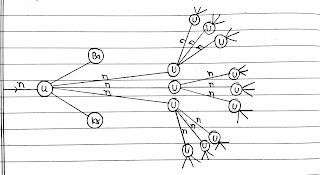Nuclear Energy:
The energy released during a nuclear reaction is called nuclear energy. Or
The energy released during the transformation of nuclei with less total binding energy to nuclei with greater binding energy.
The two distinct way of obtaining energy from nucleus are as follows.
1. Nuclear Fission
2. Nuclear Fusion
1. Nuclear Fission:
Nuclear Fission is the phenomenon of splitting of a heavy nucleus into two or more lighter nuclei by the bonding of proton, neutron, Alpha-particle etc.
When Uranium is bombarded by slow moving neutrons a U nucleus gets excited by capturing a slow moving neutron and split into two nearly equal fragments like ₅₆Ba¹⁴¹ and ₃₆K⁹² along with the emission of 3 neutrons.
Here the value of Q is referred to the energy released in the nuclear process, which can be determined using Einstein’s mass energy relation(E= ∆mc²). The Q-value of this reaction is about 200.4 MeV.
Nuclear Chain Reaction:
In the nuclear fission reaction, there is a release of extra neutrons. The extra neutrons in turn initiate fission process, producing still more neutrons and so on. Thus a chain of nuclear fission is setup called nuclear chain reaction.
This Chain Reaction may be of two types.
(I) Uncontrolled Chain Reaction:
During fission reaction, neutrons released are again absorbed by the fissile isotopes, the cycle repeats to give a reaction in this process a very huge amount of energy released within second.
The below change shows uncontrolled chain reaction. Atomic bomb is an example of this reaction.
(II) Controlled Chain Reaction:
The chain reaction can be controlled and maintain steady by absorbing a suitable number of neutrons at each stage of the reaction, so that on the average one neutron remains available for exciting further fission. Such a reaction is called controlled chain reaction.
It was first done by USA In 1942. Nuclear reactor is an example of controlled chain reaction.
Nuclear Reactor:
It is a device which convert nuclear energy into electrical energy.
Principal: It is based on the principle of controlled fission reaction.
(I) Nuclear Fuel: It is a material that can be used for the fission process. Generally U²³⁵ is used as nuclear fuel.


